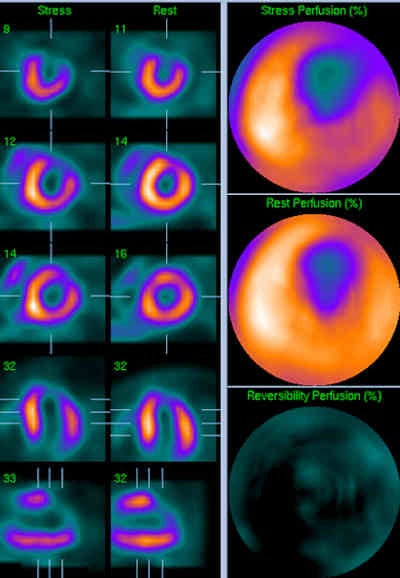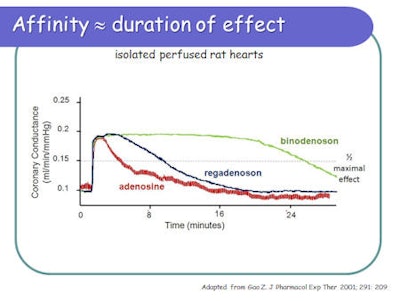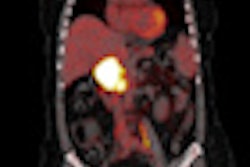
Up to half of patients who receive myocardial perfusion scintigraphy cannot perform the adequate exercise required for a cardiac stress test in the diagnosis of coronary artery disease or assessing its severity. For these patients, an alternative pharmacological method of stress must be used to simulate the effect of exercise by increasing coronary blood flow.
Industry has responded by providing possible solutions. For instance, GE Healthcare, in partnership with RapidScan Pharma Solutions, has developed a new-generation pharmacological stress agent. Rapiscan (regadenoson) is a selective coronary vasodilator for use in cardiac stressing.
"This is an effective new agent for pharmacological stress and is equally effective compared with adenosine. It is easier to use, appears to be better tolerated by patients, and is preferentially given to patients with varying levels of airway diseases," Dr. Richard Underwood, a professor of cardiac imaging at the National Heart and Lung Institute at Imperial College London, told delegates at the 2011 annual congress of the European Association of Nuclear Medicine (EANM) held in Birmingham, U.K. "The new agent produces inducible perfusion abnormalities at least as well as adenosine."
 Myocardial perfusion scintigraphy performed with regadenoson.
Myocardial perfusion scintigraphy performed with regadenoson.
 
Myocardial perfusion scintigraphy performed with regadenoson. All video and images courtesy of Dr. Richard Underwood. Source: New options in pharmacological stress, EANM 2011.
|
 Myocardial perfusion scintigraphy is alive and well. This slide shows the tests per million.
Myocardial perfusion scintigraphy is alive and well. This slide shows the tests per million.Arguably the most important property of the new generation stressor is its selectivity: Rapiscan is a selective A2A adenosine receptor agonist. The A2Areceptor system is responsible for regulation of myocardial blood flow by vasodilation of the coronary arteries, increasing blood flow to the myocardium, and it is the only adenosine receptor system of interest in perfusion imaging, he explained. This helps to minimize unwanted effects such as slowing atrioventricular node conduction, peripheral vasodilatation, and bronchoconstriction caused by targeting other adenosine receptor subsystems, A1, A2B, or A3.
"It could be expected that regadenoson would have a more favorable adverse side effect profile; however, the incidence of all side effects appears similar to adenosine," said Underwood, who is also an honorary consultant at the Royal Brompton and Harefield Hospitals. "Perhaps more importantly, though, is that these shared common side effects are much less severe and better tolerated by patients with regadenoson compared to adenosine. We have also observed that when regadenoson is used together with submaximal exercise, the adverse event severity is reduced even further."
 This slide shows the time course of action of the adenosine agonist options.
This slide shows the time course of action of the adenosine agonist options.A particular clinical niche for the agent is in patients with moderate to severe airways disease due to the potential of adenosine to cause bronchospasm. Another advantage is that it is administered as a single nonweight-based bolus injection, meaning that it requires no dose adjustment. Despite the single dose of 400 µg, only a slightly higher level of the drug impacts upon the coronary artery of a lean patient compared with an obese person. However, these differences in concentration in an obese patient do not give a greater or lesser effect on vasodilatation; maximal coronary vasodilatation is achieved irrespective of weight with just a single dose, he commented. This is preferable to adenosine, which, due to the fact that it is given in a weight-related manner, leads to a higher incidence and severity of adverse events in obese patients.
For myocardial perfusion imaging, particularly in obese patients and patients with airways disease, regadenoson's selectivity, tolerability, and ease of administration make it an important pharmacological tool for the induction of coronary stress, according to Underwood.



















